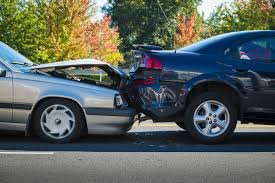What to Do After a Rear-End Crash: Step-by-Step Guide

Rear-end crashes happen to even the most careful drivers, and while they might look minor from the outside, they can create serious injuries and turn into complicated insurance nightmares. From whiplash that doesn’t show up until the next day to property damage that costs way more than expected, the aftermath can feel completely overwhelming when you’re not sure what to do first.
Acting quickly and smartly doesn’t just protect your health, it also makes sure your legal and financial interests stay covered while everything gets sorted out. Many people eventually reach out to rear-end accident lawyers for guidance when insurance companies start playing games or injuries turn out worse than initially thought.
We’ll walk through exactly what to do after getting rear-ended, from checking for injuries and documenting everything to dealing with insurers and protecting your legal rights throughout the whole process.
Making Sure Everyone’s Actually Okay
Your first priority after any crash is making sure nobody’s seriously hurt, even if everyone seems fine at first glance. Check yourself, your passengers, and anyone else involved for obvious injuries, but don’t ignore minor aches or pains that might seem insignificant right after the adrenaline kicks in.
Whiplash, concussions, and back injuries love to hide for hours or even days after rear-end crashes, waiting to surprise you when your body finally realizes what happened. Call 911 immediately if anyone complains of pain, feels dizzy, or if there’s obvious damage to the vehicles. Police reports create official documentation that becomes absolutely crucial for insurance claims and any potential legal action down the road.
Getting Out of Harm’s Way Fast
If your car still runs and isn’t leaking fluids everywhere, move it to the side of the road or into a parking lot as quickly as possible. Sitting in active traffic lanes after a crash is like playing Russian roulette with distracted drivers who might not see the accident scene until it’s too late to stop.
Turn on your hazard lights immediately and set up warning triangles or flares if you have them available. Don’t worry about arguing fault or figuring out blame while you’re still in danger of getting hit by another car. Once everyone’s safely out of traffic, then you can start the process of gathering information and documenting what happened.
Becoming a Detective at the Scene
Exchange all the important stuff with the other driver: full names, phone numbers, driver’s license numbers, license plate numbers, and insurance company details with policy numbers if they have them handy. Don’t just trust that they’ll give you accurate information, take photos of their driver’s license and insurance card with your phone to avoid transcription errors later.
Take tons of photos from every angle showing vehicle damage, skid marks, road conditions, traffic signs, and the overall accident scene. If there are witnesses hanging around, get their contact information and ask for quick statements about what they saw happen. The more evidence you collect right now while everything’s fresh, the easier your insurance claim becomes and the better protected you are if the other driver tries changing their story later.
Don’t Skip the Doctor Visit
Here’s where a lot of people make a huge mistake: they feel fine immediately after the crash and decide medical attention isn’t necessary. Rear-end collisions create forces that can injure your neck, back, and head in ways that don’t always hurt right away, especially when adrenaline is masking the pain.
Whiplash, concussions, and soft tissue damage often take hours or even days to show symptoms, but by then it’s harder to prove the injuries came from the accident. Visit a doctor or urgent care center even if you feel perfectly fine, because medical records create a paper trail that links your injuries directly to the crash. Getting prompt medical care also prevents minor injuries from turning into chronic problems that could affect you for months or years.
Getting Your Insurance Company in the Loop
Contact your insurance company as soon as possible after the crash, ideally within 24 hours while all the details are still crystal clear in your memory. Give them accurate information about what happened, but stick to the facts and avoid speculating about who’s at fault or making statements that could hurt your claim later.
Share all the photos, police report numbers, and documentation you collected at the scene because this evidence helps your insurer understand exactly what happened and speeds up the claims process. Some insurance policies actually require quick reporting to remain valid, so don’t procrastinate on this step even if you think the other driver’s insurance should handle everything.
Protecting Yourself for the Long Haul
Rear-end crashes might be incredibly common, but handling them the right way makes all the difference between a smooth resolution and months of headaches. By checking for injuries, calling 911 when needed, moving to safety, collecting solid documentation, getting medical attention, and notifying your insurer quickly, you protect both your health and your wallet.
Most rear-end accident cases resolve without major drama, but complications pop up when injuries turn out worse than expected or when insurance companies start playing hardball with settlements. When the other driver’s insurer tries lowballing your claim or your own company starts dragging their feet, legal guidance becomes really valuable for making sure your rights stay protected.
The bottom line is staying calm, following these steps religiously, and not being afraid to get professional help when insurance companies start acting like they’re doing you a favor instead of paying legitimate claims. Rear-end accidents might seem straightforward, but protecting your interests requires more strategy than most people realize.



